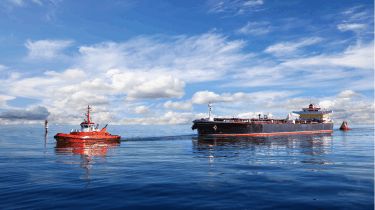
Innovative Applications of Load Cells in the Aquaculture Sector 📰
4th Jul 2024Aquaculture, the farming of aquatic organisms such as fish, shellfish and aquatic plants, plays a significant role in meeting the growing demand for seafood worldwide. Precision measurement and control are essential in aquaculture operations to ensure optimal growth conditions, feed management and environmental sustainability. Load cells offer innovative solutions for monitoring and managing various aspects of aquaculture production, from feed dispensing and mooring line monitoring to fish and aquatic plant weighing and harvesting. This article explores the innovative applications of load cells in the aquaculture sector, highlighting their role in improving efficiency, productivity and sustainability in fish and aquatic plant farming operations.
Fish Weighing and Harvesting:
Accurate weighing of fish and aquatic plants is crucial for assessing growth rates, monitoring biomass and optimising harvesting operations in aquaculture facilities. Load cells are utilised in weighing systems, grading machines and harvesting equipment to accurately measure the weight of batches of fish and aquatic plants. By integrating load cells into fish tanks, net pens or processing lines, aquaculture operators can automate the weighing process, streamline harvesting operations and track growth performance over time. Additionally, load cells equipped with data logging and traceability features enable the recording of weight data, facilitating inventory management, quality control and market compliance.
Environmental Monitoring and Sustainability:
Load cells play a role in environmental monitoring and sustainability initiatives in aquaculture by enabling the measurement and management of environmental impacts and resource utilisation. Load cells integrated into aquaculture infrastructure such as floating cages, pen systems and feeding platforms can monitor structural loads, buoyancy and stability, ensuring the integrity and sustainability of aquaculture installations. Additionally, load cells are utilised in aquaculture feed barges and offshore aquaculture facilities to monitor anchoring systems, mooring lines and environmental conditions, minimising the risk of equipment failure, habitat degradation and marine pollution.
Feed Management and Dispensing:
One of the key applications of load cells in aquaculture is in feed management and dispensing systems. Load cells are integrated into feed silos, hoppers and dispensers to accurately measure and control the amount of feed distributed to fish or aquatic organisms. By monitoring the weight of feed in real-time and adjusting feeding rates based on predefined parameters, load cells enable precise feed management, minimising feed wastage and optimising feed conversion ratios. Additionally, load cells equipped with automation and control systems allow for customised feeding schedules and feeding strategies tailored to the nutritional needs and growth stages of fish species, enhancing overall feed efficiency and reducing operational costs.
Innovative applications of load cells in the aquaculture sector contribute to improved efficiency, productivity and sustainability in fish farming operations. By providing accurate measurement and control capabilities for feed management, fish weighing and environmental monitoring, load cells enable aquaculture operators to optimise production processes, enhance fish health and welfare and minimise environmental impacts. As aquaculture continues to evolve to meet the growing demand for seafood, the integration of advanced load cell solutions will play a vital role in driving innovation and sustainability in the industry.